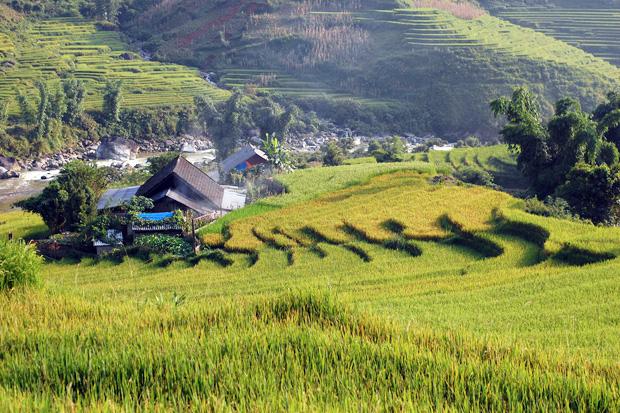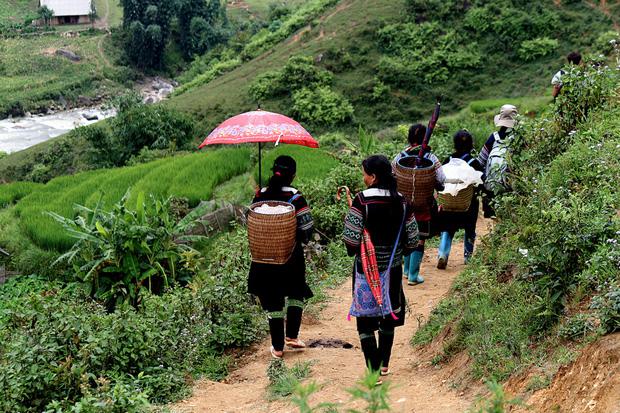Whenever travellers to Sapa return home and share stories from their incredible trip with friends and family, there is always one thing that tops their list of ‘best experiences’ and that’s staying in a traditional homestay. A homestay is a type of bed and breakfast or inn, usually ran by local families in the many small villages that surround Sapa. Staying in a homestay means staying in a family home rather than a hotel or hostel. This isn’t like sleeping over at your mums for the night, nor is it like crashing out on a strangers floor after a party, it is an immersive cultural experience like no other. This may sound a little scary but homestays are very well established and organised in Sapa and hosts are friendly and accommodating. By staying in a homestay you get to sample daily life in the villages, away from the tourist-focussed conveniences of the centre of Sapa, and eat, drink and be merry just like the locals do.
Why Choose a Homestay?
The best homestays are those that are overseen by charity organisations and local social initiatives that aim to support local tribespeople and improve their lives through homestay programs. By hosting guests in their homes, many families are able to support themselves financially, plan for their children’s futures and generally improve their standard of living. Members of local tribes who would previously have struggled to make ends meet, such as elderly couples, widowed mothers and unmarried women, can earn an independent income and avoid exploitation. Organisations such as Sapa Sisters, Sapa O’Chau and Sapa Tribes are known for their ethical approach to homestays.

Location
Choosing to spend the night in a homestay means choosing to wake up in a stunning location, one normally only seen during the course of a trek or jeep tour. Homestays are people’s actual homes in the villages surrounding Sapa so you can enjoy simple, authentic village life and experience life from the perspective of the local tribespeople. A stay in a homestay is normally combined with a trek of some sort which means you wake up surrounded by beautiful scenery, already at the first destination on your trek.
Accomodation
It’s important to be aware that for most homestays you will be sleeping in a part of the host’s home. The standard of the home comforts will probably not be what you’re used to. At the very least you will have a comfortable bed of your own and access to electricity. Toilet facilities vary and access to a hot shower can be rare. Some homestays host different groups of people on the same night so find out if you’ll be sharing your room with anyone else before you commit to staying. It’s important to ensure you have an idea of what is available to make sure your accommodation meets your expectations. That said, this is all about experiencing new things so sometimes it’s best just to go with the flow!
People
During your homestay you will come into contact with many and varied local people offering you a unique immersion in their culture and customs. Families are large and extended in Sapa. Most families will have children, (some will have many children!) so you will need to be comfortable with getting a lot of attention from curious little ones! Many villagers who host homestays will speak English but it is rare for Sapa villagers to be able to read and write in English. Mong is the local language amongst the Black H’Mong tribes, but most other will speak Vietnamese.

Food and Drink
Most homestays offer an evening meal and breakfast as part of your stay. As in the rest of Vietnam, food is very important in Sapa and local people are keen to show foreigners their culinary skill. You can expect a well-prepared and tasty Sapa feast on the night you arrive, perfect if you have been trekking all day in the mountains and valleys of picturesque Sapa. Homestays are usually customisable and hosts are very accommodating. If you’d like to learn more about Sapa cooking by helping to prepare the evening meal or assist your host in buying ingredients at the market, you need only ask.
Extras
Traditional herbal baths are very common in Sapa and many homestays will offer this luxurious treat as part of your stay. If the bath is not available in the homestay itself, it will not be difficult to find somewhere in the village where you can indulge for a few thousand dong. Staying in a homestay is also the perfect time to buy handcrafted souvenirs. Unlike the markets of central Sapa, where many items are shipped from China and sold by Vietnamese people from other parts of the North, the small villages around Sapa are where you can buy genuine handcrafted goods and support local tribespeople.
The post What to Expect From A Sapa Homestay appeared first on Trekking Sapa.